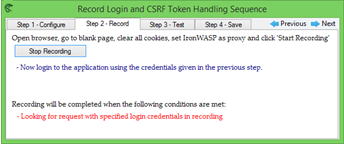Dynamic Reviewer is made over 3 solutions: HAST (IAST+RASP), DAST and APM.
...
Dynamic Reviewer DAST plugins based architecture provides an VB.NET, Python and Ruby Scripting Environment with API (Desktop version), with full access to all functionality of the tool, for creating precise Crawlers and Scanners, used by the Pen Testers to write their own fuzzers, create custom crafted request, analysis of logs, etc.
Dynamic Reviewer DAST provides a robust and stable framework for Web Application Security Testing, suitable for all Security Analysts, QA and Developers with False Positives and False Negatives support. It is designed for optimum mix of Manual and Automated Testing and allows designing customised penetration tests, offering an easy-to-use GUI and advanced scripting capabilities.
Best Performances
Scan-times using traditional tools can range between a few hours to a couple of weeks – maybe even more. This means that wasted time can easily pile up, even when we’re talking about mere milliseconds per request/response.
Dynamic Reviewer benefits from great network performance due to its asynchronous HTTP request/response model. In this case – and from a high-level perspective –, asynchronous I/O means that you can schedule operations in such a way that they appear like they’re happening at the same time, which in turn means higher efficiency and better bandwidth utilization.
It provides a high-performance environment for the tests that need to be executed while making adding new tests very easy. Thus, you can rest assured that the scan will be as fast as possible and performance will only be limited by your or the audited server’s physical resources.
Avoiding useless technical details, the gist is the following:
...
It provides the single point of contact that will contact its grid of Dispatch Servers (Dispatchers) with initial scan requests. The Dispatchers then spawn a new Instance on that Server. At this point, the Web UI Clients will be able to communicate directly with the spawned Instance to configure it for the appropriate scanning jobs. When an Instance is done with its task, The Web UI Clients pull the data and store it, while the Instance simply goes away, returning the resources it consumed to the operating system for future Instances or other software tasks altogether. As we move into production testing, we can scale the deployment to span additional resources on other servers in our grid, and this will not only allow us to run multiple scans, but accommodate teams of users while consolidating the data gathered in a central database on the Web UI Client.
...
Configuration options include:
...
Built-in Crawler, Scan Manager and Proxy
...
Login Sequence Recording
C#, VB.NET, Python and Ruby based Plugins, compatible with Burp Suite, Acunetix, TrustWare (formerly Cenzic) scripts and IronWASP API. Comes bundled with a growing number of Modules built by researchers in the security community
...
Dynamic Reviewer DAST automatically Import Security Reviewer's Static Analysis the analyzed Web Application's directory and file lists, Attack Vectors and Exploits.
...
DISCLAIMER: Due we make use of opensource third-party components, we do not sell the product, but we offer a yearly subscription-based Commercial Support to selected Customers.
COPYRIGHT (C) 2014-2021 SECURITY REVIEWER SRL. ALL RIGHTS RESERVED.

